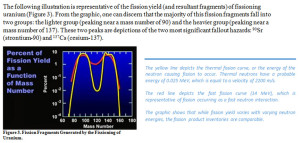Guest Blogger Sarah Schmitt
 Hello, my name is Sarah Schmitt, and I am a student in the fall 2013 CUPID Studio course. I am a senior Professional Writing and Biology minors with a major in Environmental and Ecological Science. This semester, our class has worked collaboratively to help one another develop professional portfolios that can be used in the future to showcase ourselves to potential employers and in other professional endeavors. Perhaps one of the most valuable things I have taken from this class thus far is choosing portfolio pieces that speak to my writing capacity, are diversified in scope, and are rhetorically sound.
Hello, my name is Sarah Schmitt, and I am a student in the fall 2013 CUPID Studio course. I am a senior Professional Writing and Biology minors with a major in Environmental and Ecological Science. This semester, our class has worked collaboratively to help one another develop professional portfolios that can be used in the future to showcase ourselves to potential employers and in other professional endeavors. Perhaps one of the most valuable things I have taken from this class thus far is choosing portfolio pieces that speak to my writing capacity, are diversified in scope, and are rhetorically sound.
When I came into the second day of class, I had a list of potential portfolio documents a mile long. I spent the evening prior rummaging through my hard drive and trying to collect every lengthy lab report and course paper I have ever written since I got to Elon. For someone who typically prides herself in being incredibly organized and on top of things, I felt lost in this seemingly endless compilation of my work.
Once class discussion began, though, it became clear to me that I had skipped perhaps the most fundamental step in compiling these documents: I had completely overlooked the purpose of my portfolio and who my prospective audience was going to be. No wonder I couldn’t prioritize the potential significance of each piece.
RPR encouraged us to take a minute to critically consider both of these points. Unlike most of my classmates in CUPID Studio, I am not an English major. In my time at Elon, the majority of my academic writing has consisted of lab reports, quantitative calculations, and LOTS of data analysis. How could any of these pieces help me in reaching out to future employers?
I then took a step back. You see, it is not my intention to apply for jobs once I graduate. Instead, it is my intent to apply to graduate school and get a doctoral degree before even moving on to the “real world.” Thus, the purpose of my portfolio is not to reach out to potential employers; it is to reach out to potential graduate advisors in the geosciences.
I went through my potential portfolio pieces yet another time. My chemistry lab report on Beers Law? Every second semester chemistry student has written that one. My pop bio lab report on fruit flies? Banal. While it was certainly a relief to whittle down the size of my original portfolio, many of the pieces I had listed were being crossed off my list.
Then it came to me. Instead of trying to break down my portfolio into categories by semester, as to show the progression of my writing throughout my college career, or by academic course, as to have a very specific and prescribed categorization mechanism, I realized the necessity of including pieces outside of just my schoolwork. Then, I would be able to create a “best of” portfolio to have at hand when potential graduate advisors asked for a sample of my writing. My portfolio compilation began to look like this:
Peer-Review Publications and the Jurisdictional Wetland Delineation
- “Photosystem II Fluorescence as Related to Long-Term Salinity Stress in Spartina patens”; co-author. Will be submitted to: Journal of Aquatic Botany
- “CO2 Efflux Monitoring in Natural and Restored Maritime Swamps, Outer Banks, NC”; co-author. Will be submitted to: Journal of Experimental Marine Biology and Ecology
- Jurisdictional Wetland Delineation
Other Professional Publications
- Nuclear Fallout: A Primer for Disaster Planners and First Responders
Academic Lab Reports and Technical Writing Pieces
- GIS Project: Herpetological Mapping of Chrysemis picta picta in the North Carolina Piedmont
- Environmental Policy and Law Final Paper: Chesapeake Bay Oyster Restoration Initiative
- Final Aquatic Lab Paper
To provide some context, I have included a snippet of one of my pieces (#4):
What came to reinforce my confidence in this type of portfolio categorization was the reflection activity that followed the discussion on selecting portfolio pieces. In this activity, each of us was asked to consider the following questions:
• How do your materials reflect your response to a specific (rhetorical) situation?
• What decisions did you make when you composed each item?
• What techniques and strategies did you employ?
• What new inquiry and writing approaches did you experiment with to complete each project?
• What contextual factors influenced your development of the materials?
These questions, in conjunction with the feedback that I received from both RPR and my classmates, proved to be invaluable. Now, with these questions, a purpose and a supposed audience in mind, I am incredibly confident in the progress that I have made on my professional portfolio.


 Follow
Follow